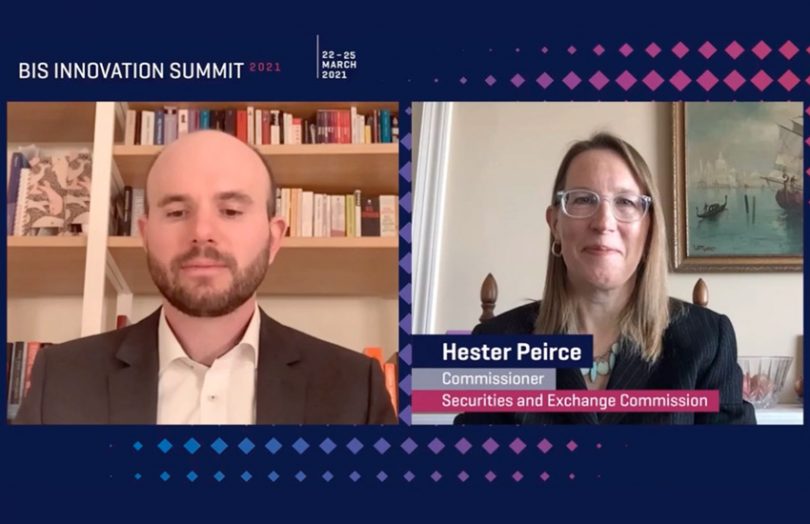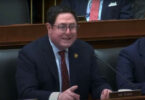Today in a panel at a Bank for International Settlements (BIS) event, U.S. SEC Commissioner Hester Peirce, known as ‘crypto mum’, outlined some of the thorny issues around regulating decentralized finance (DeFi). She covered which areas would attract scrutiny from the SEC, the lack of a central counterparty to regulate, and her Safe Harbor proposal, which she plans to update.
She stated that many aspects of DeFi are outside the SEC’s purview, noting that a lot of what’s happening in DeFi is more about banking than securities, presumably because a significant amount of activity is around borrowing, lending, and to a lesser extent, insurance. Cryptocurrencies such as bitcoin and ether are classed as commodities which is the turf of the CFTC.
Peirce noted that if a protocol intended to mimic securities or related to asset management, it would be within the SEC’s purview. She added, “if you set up some sort of decentralized exchange (DEX) or automated market maker (AMM) that is trading securities among other things, then you have to think about what the implications are there.”
We’d observe it’s hard for a DEX to avoid that. Most DEXs or AMMs enable others to decide what assets to trade. So it would require a DEX coder to block numerous unknown assets somehow. There might need to be a list of acceptable assets. But which assets and who decides? It starts to introduce centralization. And whether or not a digital asset is a security is such a grey area.
For example, the SEC alleges that XRP is a security, resulting in many centralized exchanges dropping it. You can sort of trade XRP on the UniSwap DEX. That’s because Synthetix offers a version of XRP. Given XRP has its own blockchain protocol, what Synthetix is offering is a derivative. And derivatives are the purview of the CFTC. But several other cryptocurrencies traded on DEXs might be classed as securities.
It’s not something Peirce stated, but we’d argue the same issues might impact the borrowing and lending protocols. All DeFi lending protocols lend money against digital assets. And some of those digital assets could be securities. This means most lending protocols are probably involved in securities lending. And that falls under the SEC’s purview.
No central counterparty
Peirce’s next point was about the decentralization challenge. “Us regulators are used to dealing with a central counterparty to whom we can go and to whom people using the service can go when there’s a problem. That is certainly a risk,” she said.
However, the regulator identified potential alternative ways to mitigate the risk, such as insurance or creating a system to mutualize any losses.
“Often, people aren’t really thinking about regulation until there’s actually a problem. And then when there is a problem, they really want there to be a regulator to go to. And they really want there to be a way to reverse the bad thing that happened,” said Peirce.
She continued, “In the case of DeFi there could be neither. And that could be really problematic for people. And they’ll only find out about it, or they’ll only really focus their thinking on that point when something does happen.”
The regulator made an interesting metaphor that envisages something similar to a DeFi Mullet haircut where the user interface is more conventional for the average person and centralized, and the decentralized activities happen in the background.
Meanwhile, Peirce also talked about the Safe Harbor proposal she made last year. It aims to allow projects, not just DeFi projects, to issue tokens without being classed as securities with a three-year grace period. That’s only provided there’s transparency over code builds and token transactions. Plus, it would be subject to anti fraud laws.
She plans to update the proposal and share it with incoming SEC Chairman Gary Gensler. “I’m hoping to present the safe harbor to him and suggest that he pursue something like it. I’m not wedded to that. But I think we need to provide some clarity for people trying to develop these networks,” said Peirce.






